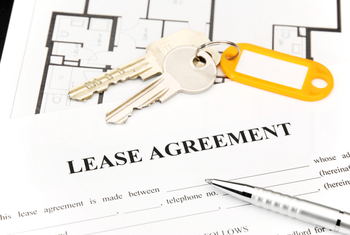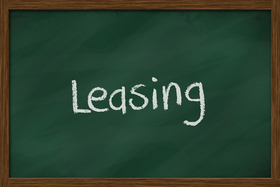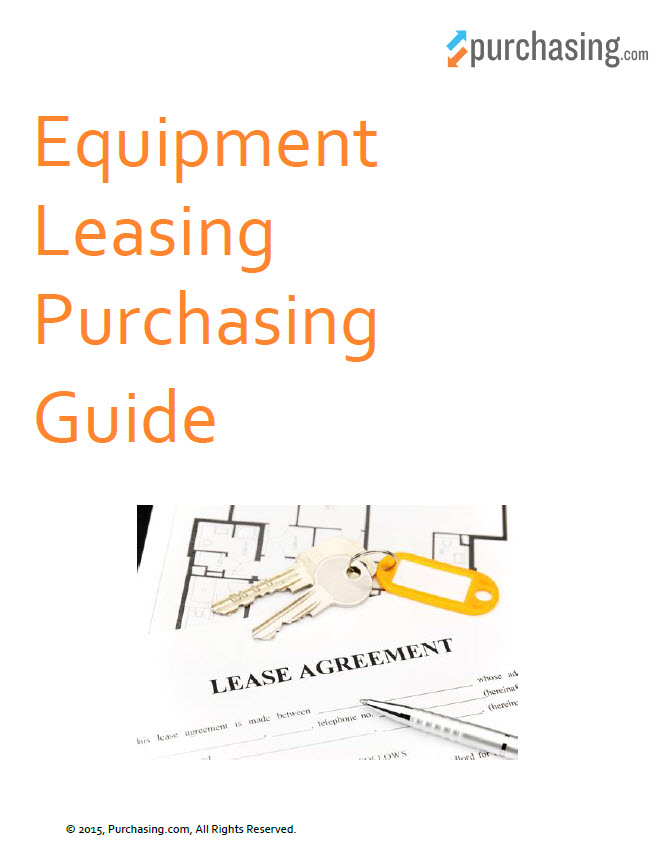Introduction to Equipment Leasing
Table of Contents
 - Introduction
- Introduction
- Trends
- Terms
- Types
- Choosing a Dealer
Introduction
Equipment leasing has become an increasingly popular option in many industries. Business owners and managers appreciate the flexibility, tax implications and included costs, among other benefits. But for someone new to the process, leasing can be nerve wracking and full of questions. These questions include inquiries for information about equipment leasing, what the process is and what determines when leasing is better than purchasing equipment.
To start, Equipment leasing is when a business chooses to pay another entity for the use of machinery, vehicles or other equipment through a payment program. Ownership is retained by the entity but the business has the use of the equipment for the agreed upon period of time. Leasing does not require investing capital and provides better opportunity for managing cash flow and operating expenses.
There are other benefits to leasing equipment. Short-term leases allow you to evaluate if the equipment fits your requirements. You can keep up with the newest technology or "bells and whistles" and maintenance may be included in the lease. There are potential tax advantages as well because lease or rental payments are fully deductible instead of depreciated for owned or fixed assets.
A potential disadvantage is overall cost of the equipment by leasing. If you lease a piece for a significant amount of time, the overall cost of the lease could exceed the purchase price of the equipment. A lack of ownership interest can be costly if you decide you want to purchase the equipment at the end of the lease but discover too late that the cost of it would be prohibitive. Depending on your business's tax situation, depreciation may be more advantageous than the deduction.
Popularity and process
According to the Equipment Leasing Association of America, nearly 80% of all companies lease at least some equipment in their day to day operations. The Alta Group, LLC recently released a report for 2015 indicating industries that use equipment leasing. In order of their popularity, they are:
|
|
Working with an experience lender is the first step in the process, as he or she will have industry knowledge to draw on when advising you. The lender will need information from you, such as business credit history, cash flow history, business projections, possible collateral and assorted loan documentation such as tax returns.
Once approved, you and the lender will discuss terms of the lease. The two primary factors are your monthly estimated profit and desired loan amount. The lender will want to know that the money you earn while using the equipment will be sufficient to make the payments. The term length will have an impact on the cost per month as well.
What to consider
 When deciding to lease equipment, there are a variety of factors to keep in mind and weigh against one another to arrive at a final determination. These items include:
When deciding to lease equipment, there are a variety of factors to keep in mind and weigh against one another to arrive at a final determination. These items include:
- How long you will need the equipment
- What your budget is
- Model year and condition of the equipment
- What it can be used for
- If down payments are required
- Flexibility of the finance terms
By asking and answering those questions, and others based on information found in this guide, you will be able to make a sound and reasonable decision for your organization. This guide will cover the trends, considerations, terms, processes and types of equipment leasing, as well as advice on what to ask your dealer and lender.
Trends
When you want or need to add equipment to your fleet, you must first decide if you are going to purchase equipment or lease it. Each option has positives and negatives that depend on the financial state of your organization, the requirement to be met and your long-term projections.
Purchasing
Purchasing new equipment has its advantages. You get the newest technology available in the industry. It becomes a fixed asset, adding value to your financial statements and offers tax write-offs in the form of depreciation. You decide where, when and how to use it with no disclaimers or anyone limiting its use in hours, location or purpose. You are in full control of its repair and maintenance schedule, allowing you to protect your investment, schedule services at convenient times and have peace of mind that it is safe and fully functional.
Yet purchasing also has disadvantages. What may be the newest technology now will be outdated in five years and you would have to buy another new piece of equipment to upgrade. During or at the end of the equipment's life cycle, you have to facilitate disposal of the piece. Depreciation occurs over a period of time so the purchase cost of the equipment may not be realized until the end of its use. You bear the responsibility to pay for any and all maintenance or repair costs, to include transport to the repair facility.
Leasing
Equipment leasing is popular because its advantages are the mirror of the purchasing disadvantages; with a lease, you determine how long you want the piece of equipment. At the end of the lease, you return it, and can lease another more current version. When you are finished with the equipment, you can return it to the owner without having to worry about finding a buyer for it or a place to retire it.
Lease payments are treated as an expense, giving you full and immediate tax benefit. Lease agreements frequently include maintenance and repair costs as well as transport, delivery and set up fees. The table below gives a side by side comparison.
[table]
Factor, Loan, Lease
Purchase Price, "Purchase price is within your capital investment range and you will use it as a steady means to accomplish jobs for profit.", "Price is or is not within your capital investment range and you will use it as a steady means to accomplish jobs for profit.",
Payment Terms, "You repay advance of the funds lent to you to purchase the equipment.", "You are paying to rent the equipment.",
Terms of Ownership, "Borrower owns the equipment in full at the end of the loan period. You will hold legal title and no one expects you to return the equipment.", "You may be able to purchase the equipment at the end of the lease (conditional sale) but until then, the lessor holds title. Under a true lease, equipment is returned at the end of the lease period.",
Annual Depreciation, "Depreciation offsets cost over the life cycle of the equipment.", "None as payment will be considered an expense.",
Tax Impact, "IRS schedules allow you to depreciate a portion of the purchase price over time.", "Full payment treated as expense for immediate tax benefit.",
Inflation Impact, "More of the financial obligation is paid as inflation goes up, making each dollar more expensive.", "More cash flow, especially with a purchase option later in the lease, makes each dollar cheaper in terms of inflation.",
Down Payment Requirements, "Equipment loans usually require a down payment and then finance the balance.", "A true lease requires no down payment and only requires a payment at the start of the lease period.",
Payment Scheduling, "Loan payments are made in arrears of each of the loan periods.", "Lease payments can be made in advance or in arrears of the lease period depending on the agreement.",
Monthly Costs, "Loan payment is for the cost of the equipment only. Transport, delivery and set up costs are in addition and your responsibility.", "Lease payment is for the cost of equipment and may also include transport, delivery and set up costs, if applicable.",
Equipment Usage, "You will require the equipment for long periods of time, up to the lifetime of the equipment.", "You will require the equipment for a long period of time but want flexibility.",
Obsolescence Risk, "Owner/Borrower bears the risk of the equipment becoming obsolete and the replacement cost.", "With no obligation to own at lease end, the lessee is free of the obsolescence risk. You can also seek a provision for an upgrade during the lease term for an additional cost.",
Collateral Requirements, "Depending on the lender's evaluation of your credit worthiness, currently owned assets may need to be pledged as collateral, which could be seized if you default on the loan.", "None as the leased equipment would just be returned to the owner should you default on the lease agreement.",
Maintenance Costs, "Owner pays all maintenance and repair costs.", "Maintenance and repair costs are included in the terms of the lease.",
Depreciation Allowance, "Owners may claim a tax deduction for a portion of the loan payment as interest as well as depreciation determined by the IRS schedules.", "Under a true lease, lease payments are considered an expense and fully tax deductible, providing greater tax relief over the life of the lease term. If the lease is a conditional sale, the equipment is treated as owned."
[/table]
Terms
 When you start investigating your equipment leasing options, you will find certain general terms used frequently. This list is not meant to be all-inclusive; just a starting point for your research.
When you start investigating your equipment leasing options, you will find certain general terms used frequently. This list is not meant to be all-inclusive; just a starting point for your research.
- Accelerated Depreciation: Higher amount of depreciation take in the earlier years of the equipment's life cycle.
- Advance Rental Payments: Payments from the lessee to the lessor at the start of the lease (ie first and last month's rent).
- Amortization: Breakdown of periodic loan payments into principal and interest portions.
- Bargain Purchase Option: Lease provision allowing the lessee to purchase the leased equipment for a price determined at lease inception and exercised at a later date.
- Default: Failure of the lessee to abide by lease agreement resulting in the lessor seeking to repossess the equipment and any damages entitled under the agreement.
- Depreciation: A reasonable allowance for wear, tear and obsolescence of equipment used by a business.
- Estimated Useful Life (or Life Cycle): Period of time that the equipment is expected to be useful in business.
- Equipment Schedule: Detailed document describing equipment being leased, start date, terms, repayment schedule and location of the equipment.
- Fair Market Value: Option to purchase the equipment at the end of the lease at market value at the time.
- Lease Schedule: Master lease agreement schedule describing leased equipment, any rentals and other terms.
- Lessee: User of the leased equipment.
- Lessor: Company that owns the equipment and is leasing to the lessee.
- Purchase Option: Right to buy equipment at the end of the lease term at times and prices specified in the lease at signing.
- Renewal Option: Option for lessee to renew the lease term at a specified amount and period.
- Upgrade: To trade in leased equipment for something newer or more advanced during the term of the lease.
Limitations
Business owners can lease all types of equipment. The most popular are vehicles or machinery, such as construction equipment, tractor/trailers, vans, and trucks. Furthermore, furniture, telecommunication systems, security systems, and computers and printing machines can also be leased.
There are, however, items that cannot be leased. Items that are destroyed in consumption for example, like office supplies, or small dollar items with short life spans, such as coffee pots or other appliances for office break rooms. For reasons like this, you will not find leasing options under $5,000. Lease payments will also include the time and background activities required in developing, negotiating and enforcing a lease, making a lease any less than that an unprofitable endeavor for the lessor.
Software, warranties, training, and installation services are also not items for which you will find a leasing company. Such items have an intangible quotient hard to price over time and remain fair for both parties. Those business needs are an outright purchase.
Typical process
As mentioned earlier, once you decide you want to lease equipment, the first step is to find a lender. Having a good professional relationship with a knowledgeable and helpful lender will make it easier. At the initial meeting, you will be asked to fill out an application. While some lenders will rely on a one-page application and make their decision based on your credit score, it is much more common to have to supply supporting documentation with your application.
Such documentation includes a credit history of the business, including a successful track record of prompt previous lease or loan payments. They will also want to see your cash flow history to get a sense of your industry's business cycles and projections for the future. The lender will ask if you have any collateral to offer. He or she will also want to see financial statements, tax returns for at least the last one to three years and your credit report. If you are a new business, they may also ask to see a business plan.
When you meet, be confident yet relatable. The personal impression you make with the lender will be a factor in their decision. Assure them through your dress, manners and any referrals you can provide that they are dealing with a consummate and informed professional.
Once approved for an amount, you and the lender will begin to discuss terms. If you are getting approval and then working with a dealer, keep your lender informed of the lease terms as you and the dealer negotiate. Turn to them with any questions that affect term and price.
Finally, once the agreement appears to be agreed upon, do not be afraid to have your lawyer or legal team review the document before you sign. Reputable dealers and lenders will not have a problem with that as it shows your due diligence and attention to detail in your business management practices.
Back to top
Leasing Types
 There are different kinds of equipment leases. We provide an overview on each below.
There are different kinds of equipment leases. We provide an overview on each below.
Operating lease
An operating lease (also known as tax lease and fair market value lease) is considered a True Lease in that it is not a loan for accounting purposes. An operating lease meets specific criteria under Financial Accounting Standards Board, No. 13 (FASB 13), which are:
- Lease term is less than 75% of the estimated life cycle of the equipment
- Present value of lease payments is less than 90% of the fair market value of the equipment
- Lease does not contain a bargain purchase option
- Ownership is retained by the lessor during and after the lease term
Operating leases, therefore, do not have rent to own or right to purchase clauses. It is, essentially, a "renting lease" that makes lease payments operational expenses and the asset is not listed on lessee's balance sheet as an asset. This type of lease usually results in the lowest payments of the financing alternatives and improves your return on investment due to the lower asset base.
The criteria under FASB 13 also help determine the lease payments and rental schedule as neither can exceed those parameters. This, in conjunction with your lender's requirements, will help ensure you enter a lease that is both legal and affordable.
At the end of the lease, you return the equipment to the lessor. While you may not renew the current lease, and the owner must retain ownership of the equipment after the lease, you can enter into a new lease for same, similar or upgraded equipment.
Finance lease
The finance lease, also known as a capital lease, is used to finance the purchase of the equipment through the end of the lease cycle. It is not considered a true lease as at the end of the lease, the lessee becomes the owner of the equipment. With this type of lease, the equipment does become an asset on the organization's balance sheet and the lessee is responsible for all costs associated, including maintenance, repairs, taxes and insurance.
The payment amount and schedule is determined by the lender and the lessee based on financing criteria, not the FASB 13. For this reason, most financial leases extend nearly the life cycle of the equipment. At the end of the lease, you own the piece of equipment and do not have to return it to the lessor.
Lessee responsibilities
Your responsibilities as the lessee under either type of lease includes:
- Prompt payment of lease payments
- Correct payment amount
If you have a financial lease, insurance is an expense that you must undertake; for an operational lease, that can be determined by clause between you and lessor, as can any extra costs, like maintenance, delivery, and transportation. Most operational leases will include them but again, you and the lessor can agree otherwise if you choose. Those costs are automatically yours under a financial lease as you are considered the owner from inception.
Finally, if you have an operational lease, your last obligation will be to return the equipment on time and in the agreed upon condition in the lease.
Back to top
Choosing a Quality Dealer
 There are different types of equipment finance providers. For equipment leases, you might talk to a broker, a leasing company or an independent lessor.
There are different types of equipment finance providers. For equipment leases, you might talk to a broker, a leasing company or an independent lessor.
Brokers
Brokers bring manufacturers and businesses with limited assets who want to grow or expand together. They bring all the elements together, making a commission from any or all parties upon the successful signing of a lease. They develop and maintain relationships with manufacturers and banks or other lenders and then find businesses with limited assets that want to grow or expand. These equipment finance providers have a wealth of information and experience that you can draw on and can help find more than one option for you.
Brokers will also be able to "bundle" equipment acquisitions from different vendors. This could be advantageous as smaller transactions will have higher fees. By bundling you can get lower rates and minimize processing fees.
Leasing company
A leasing company is the manufacturer or manufacturer dealer who has the equipment and is willing to lease directly to you without a broker. They will also work with you and your bank or financial institution directly by answering questions, advising and helping draw up the lease.
There are leasing companies that have more than one manufacturer in their leasing fleet. These are called independent lessors. Their fleet will have used equipment in it as well which can help reduce costs while giving you the serviceability you require, especially for startups or small businesses. They have no vested interest in one brand over another and look only to provide you with the best equipment to do the job.
Choosing your lessor
When choosing your lessor, consider their background and experience. How long have they been in business? What other companies do they work with? Ask for references. He or she will be looking into your history and background as well, so do not feel intrusive. It is your business to promote and protect.
Look into their credit background. You want reassurance that their creditors are not going to repossess the equipment they have leased to you. Search for any pending litigations (matter of public record) and look online for any reviews.
Also ask about their payment system. Is it seamless? Can it be accomplished online or through direct withdrawal? How complicated is it to set up and maintain? Mountains of paperwork take up valuable time on both your parts, especially over a long-term lease.
Given the differences in leases and the broad terms than can be negotiated, there are many questions to open a leasing discussion and then to get to an agreement beneficial to you both. Items to ask include:
Get Quotes
- We contact sellers
- They compete for your business
- What type of lease(s) do you have?
- Is there an upfront application fee?
- How much money is required up front?
- What are the tax benefits/implications?
- How flexible are the financing terms, like length of agreement and payment schedule?
- If you want additional equipment later under the same lease, is it possible?
- Can you have different types of equipment under the same lease?
- Are the limits on hours of us by the week, month or year?
- Is the location of use restricted?
- Is the purpose of use restricted in any way?
- Can you use it for more than one job over the term of the lease?
If you anticipate needing the equipment for the long-term and want to establish equity in it, try to negotiate a purchase option under which a portion of your lease payments is credited to the purchase price. Such questions will lead to discussions that will narrow down the terms and clauses of the lease and produce an agreement that will benefit everyone.
Back to top
